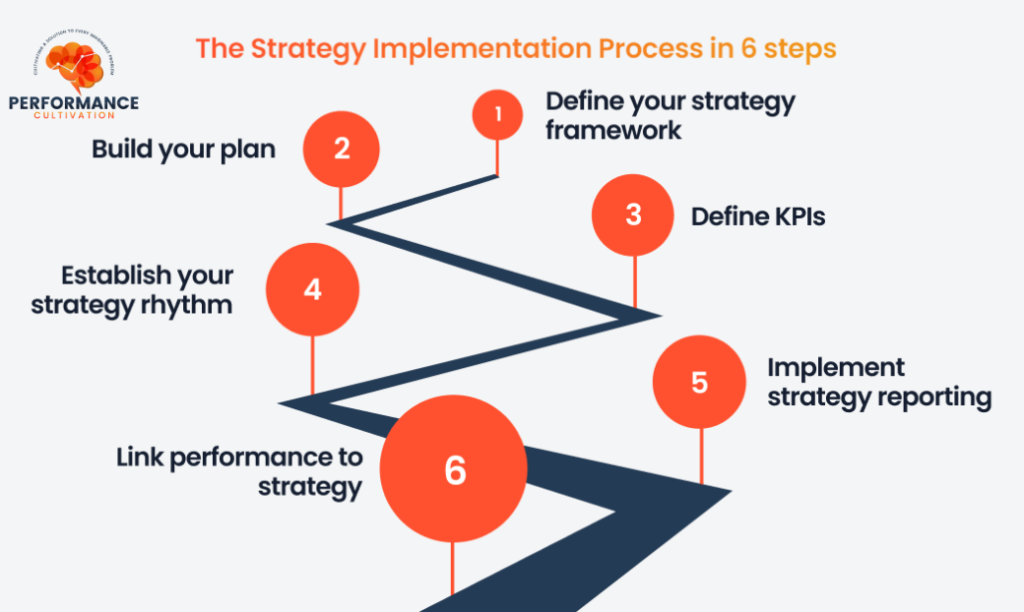
Introduction to Business Strategy
Are you prepared to elevate your business? This is the field of business strategy we are entering, where dreams of success have been turned into carefully designed plans. In this blog post, we will dive deep into the realm of BUSINESSTratear – understanding its basics and beyond. Whether you are an old hand at entrepreneurship or just starting, mastering the intricacies of strategic planning may hold the clue to growth and prosperity for you. Let us start together on this journey and see how a good strategy can shape your company’s future.
The Importance of a Solid Business Strategy
A robust strategy is equivalent to a plan in business, like a map that shows the way. It assists one in clearly seeing obstacles and opportunities.
A strong company direction and goals are outlined in a well-thought-out business strategy as it sets corporate objectives. Got distracted? Data-driven decisions will help you make focused ones.
Resource allocation, process efficiency improvement, and redundancy minimization are some ways to accomplish this with clear strategies in place. In addition, it enhances productivity, resulting in overall performance growth and making your company more competitive in the market.
Furthermore, while staying true to your core values, a vibrant business strategy can help you adapt to changing market dynamics. It also helps anticipate trends and risk mitigation/growth opportunities proactive identification, thereby avoiding them.
Developing an effective strategic plan for a corporation is critical to sustainable growth and future success in today’s turbulent market environment.
The Elements of a Successful Business Strategy

A successful business strategy requires consideration of several aspects. The foremost among them is setting clear goals and objectives for directing your enterprise toward its success path. Knowing your target market well and determining the unique selling proposition is crucial to standing out. Besides, conducting intense market research and analyzing industry trends can be helpful in strategic decision-making.
Also, an effective execution will require a solid operational plan that outlines how these objectives will be realized. You must develop a powerful team with diverse expertise to empower innovation and adaptability. Additionally, setting up metrics for tracking progress and measuring success means maintaining flexibility in planning.
Additionally, effective internal and external communication ensures organization-wide alignment. The synergy between various departments enhances overall performance.
Your company needs these properties for long-term growth in today’s competitive arena.
Different Types of Business Strategies

There is no such thing as a “one-size-fits-all” approach to business strategies. Different purposes and cases necessitate different strategies.
For example, cost leadership focuses on delivering products or services at lower costs than competitors but without compromising quality. This will attract customers who are more interested in pricing.
Differentiation strategy, conversely, involves differentiating your offerings from those of competitors through unique features or branding. Businesses can charge higher prices if they create perceived value for consumers.
Another common strategy is focused differentiation, when a company targets a particular market segment with unique products or services. As such, it can make advertising specific to their needs and obtain customer loyalty in that segment easier.
Market development strategy entails expanding into new markets using existing products or services to drive growth, while product development strategy centers on presenting new offerings that meet changing consumer tastes and preferences.
By understanding these different business strategies, companies can select the most appropriate ones for effectively realizing their objectives.
Creating and Implementing Your Business Strategy

Creating a successful business strategy is akin to building a roadmap for your company’s future. It includes analyzing the markets to identify competition and growth opportunities. Once you know what you want, it is time to implement your ideas.
It’s when ideas become reality. Your staff should be able to comprehend your organizational objectives so that the organization can achieve its targets. Communication is critical here – continually update workers on any developments, offer assistance where necessary, and be ready to adjust plans should situations change.
During implementation, it is vital to monitor performance metrics closely closely. Are you meeting your objectives? Is there room for improvement? Be bold and make course corrections if required.
The first step is crafting a sound business strategy; executing it effectively will differentiate you from competitors.
Common Mistakes to Avoid in Business Strategy
It is essential to consider the common mistakes that could hinder your success while designing a business strategy. One mistake is not conducting extensive market research before developing a plan. You need to know who customers and competitors are to make sure you take advantage of opportunities and correctly judge the industry.
Also, do not be stiff. The business environment changes with time; hence, it is necessary to remain open-minded and ready to adapt accordingly. Moreover, having unrealistic objectives or deadlines can cause sadness and anger among other organization members.
Moreover, this essay will argue that running a business without conducting regular performance evaluations may lead to failure and stagnation in terms of growth. Monitoring those leading mainly helps identify the good, what is not working, and a better way to go about it.
Measuring and Evaluating the Success of Your Business Strategy
To establish the effectiveness of one’s business strategy, measuring and evaluating it is very important. This will enable tracking progress, identifying where improvement needs improvement, and decision-making based on data. In knowing how good one person’s strategy is doing by measuring and evaluating it, there are several key performance indicators (KPIs) that firms must consider – they give measurable metrics that show if your strategic initiatives succeeded.
Analyzing KPIs lets you learn whether your strategy is working. These figures serve as a barometer for success, indicating various aspects such as revenue growth, customer acquisition costs, or market share.
KPIs should be reviewed and adjusted regularly using real-time data to remain agile and responsive in changing market environments. Continuous assessment of the outcomes of your actions will enable you to align your plans accordingly for better ones. As you know – what gets measured gets managed, so watch out for those numbers!
Adapting Your Strategy in an Ever-Changing Market
One thing to remember as a businessperson is that the market constantly changes. What worked yesterday will not work today. Adapting your strategy in such a fast-moving environment keeps you competitive and relevant.
Observe industry dynamics and consumer behaviour closely with flexibility and readiness to swerve when need be. Be at peace with trying out new things.
Feel free to try different strategies until you find one that suits your business well. Keep nimble and be prepared for any possible changes in tactics.
As Balogun (2003) has argued, adaptation is not a single instance but an ongoing process. Continuously examining and modifying your strategy helps you stay ahead of the competition.
However, in today’s dynamic market, proactive adaptation can lead to an enterprise’s long-term success.
Case Studies: Successful Businesses and Their Strategies
In the corporate world, triumphant tales emerge from inventive tactics employed by organizations that have been able to distinguish themselves in a cutthroat environment. A good example is Apple, which has stood out through its iconic product design and focus on user experience. No other company has ever cultivated customer loyalty better than Apple by building a solid brand identity and ecosystem.
Another company, Amazon, disrupted traditional retail through its e-commerce platform and logistics capabilities. Amazon is among the most valuable companies globally because it prioritizes customer satisfaction and continuously innovates.
Netflix’s shift from DVD rental to online streaming was also epoch-making in showbiz. To date, it remains ahead of others in this ever-changing field because of its strategy of developing original content and customizing recommendations for each viewer.
These case stories teach us that strategic thinking and flexibility are critical drivers of long-term success in business enterprises.
FAQs:
Q: What are the key components of mastering BUSINESSTratear?
A: Understanding the basics and complexities of strategic planning is essential for mastering “tratear.”
Q: How can a solid business strategy benefit a company?
A: A robust strategy serves as a roadmap, guiding a company through challenges and opportunities, a crucial aspect of “tratear.”
Q: What are the different types of strategies discussed in the article?
A: The article explores various strategies, such as cost leadership, differentiation, and market development, which are all integral to effective “tratear.”
Q: Why is it essential to adapt strategies in an ever-changing market?
A: Adaptation ensures relevance and competitiveness, which are fundamental to successful “tratear” in dynamic markets.
Q: How does measuring and evaluating a business strategy contribute to its success?
A: Monitoring performance metrics aids in tracking progress and making data-driven decisions, which is crucial for assessing the effectiveness of “tratear.”
Q: What role does flexibility play in executing a business strategy?
A: Flexibility allows for adjustments and course corrections, essential for successfully implementing “tratear” in response to market shifts.
Q: Can you name a successful company discussed in the article and its strategic approach?
A: Apple’s focus on product design and customer experience exemplifies strategic excellence, highlighting the importance of innovative “tratear.”
Q: Why is continual assessment of strategies necessary for long-term success?
A: Continuous evaluation helps identify strengths, weaknesses, and opportunities, which is pivotal for refining and optimizing “tratear” strategies over time.
Q: What are some common mistakes to avoid when devising a business strategy?
A: Neglecting market research, rigid thinking, and setting unrealistic objectives are pitfalls that hinder effective “tratear” development.
Q: How can businesses apply the insights from the article to enhance their strategic thinking?
A: By incorporating lessons on adaptability, innovation, and continual learning, companies can elevate their “tratear” game and thrive in competitive environments.
Conclusion
In the business world, a good strategy is essential for success. Understanding the basics and business strategy can enable your company to grow and be sustainable in an ever-changing marketplace.
It is important to note that establishing a winning business strategy calls for meticulous planning, execution, and regular assessment to ensure its long-term viability.
Keep learning from industry gurus, adjusting to market forces, and fine-tuning your approach to out-compete others. Your business will flourish using persistence in addition to strategic thinking. Now, apply this article’s insights about traders to make it big!

